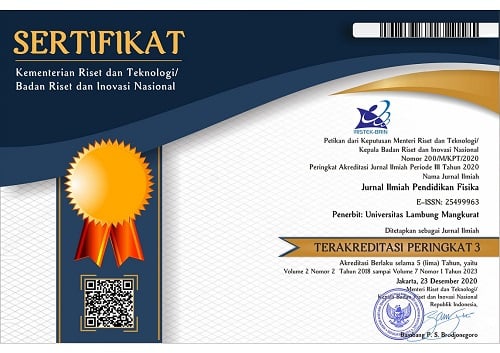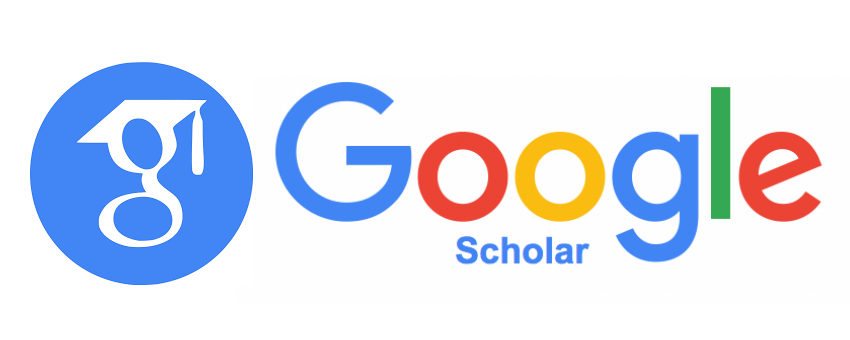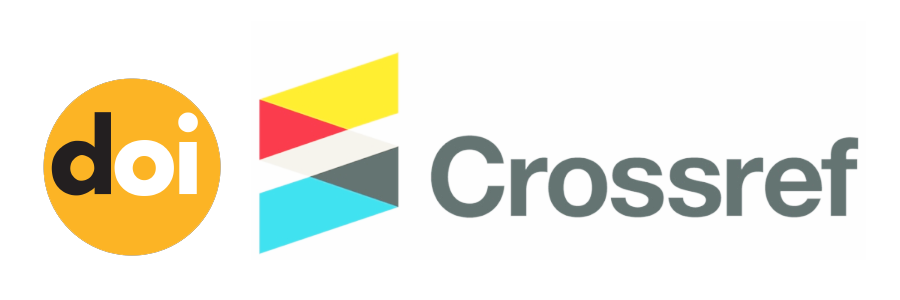Efektivitas Model Blended Learning berbasis Media Microsoft Teams pada Materi Elastisitas untuk Meningkatkan Kemampuan Berpikir Kreatif Siswa
Abstract
Penelitian ini bertujuan untuk mendeskripsikan efektivitas dari penggunaan model blended learning elastisitas berbasis Microsoft Teams dalam meningkatkan kemampuan berpikir kreatif siswa. Populasi penelitian ini adalah siswa kelas XI IPA SMA Negeri 2 Kayu Agung tahun ajaran 2021/2022 semester ganjil. Jumlah sampel sebanyak 32 melalui teknik purposive sampling. Adapun jenis penelitian ini merupakan penelitian pra-eksperimental dengan menggunakan rancangan penelitian one group pretest-posttest. Instrumen yang digunakan dalam penelitian ini adalah tes kemampuan berpikir kreatif. Hasil penelitian menunjukkan bahwa efektivitas penggunaan model pembelajaran berdasaran perhitungan n-gain adalah 0,48 dengan kategori sedang. Uji paired sample t-test memperoleh hasil tingkat signifikansi 0,000 < 0,05. Hal ini menunjukkan bahwa antara pretest sebelum menggunakan model blended learning elastisitas berbasis Microsoft Teams dan post-test setelah menggunakan mengalami perbedaan yang signifikan. Berdasarkan hasil beberapa uji dapat disimpulkan bahwa model blended learning pada materi elastisitas berbasis Microsoft Teams efektif dalam mengembangkan kemampuan berpikir kreatif. Model blended learning yang dikembangkan dapat menjadi salah satu acuan dalam pengembangan model yang sesuai dengan keterampilan abad 21 terutama dalam pembelajaran fisika SMA.
This study describes the effectiveness of using the blended learning elasticity model based on Microsoft Teams in improving students' creative thinking skills. The population of this research is the students of class XI IPA SMA Negeri 2 Kayu Agung in the academic year 2021/2022 odd semester. The number of samples is 32 through the purposive sampling technique. This type of research is pre-experimental research using a one-group pretest-posttest research design. The instrument used in this study was a test of creative thinking skills. The results showed that the effectiveness of using the learning model based on the n-gain calculation was 0.48 in the medium category. Paired sample t-test results obtained a significance level of 0.000 <0.05. This shows a significant difference between the pretest before using the blended learning model of elasticity based on Microsoft Teams and the post-test after using it. Based on the results of several tests, it can be concluded that the blended learning model on elasticity material based on Microsoft Teams effectively develops creative thinking skills. The blended learning model that has been developed can be one of the references in developing models following 21st-century skills, especially in high school physics learning.
Keywords
Full Text:
PDFReferences
Alacapinar, F. G. (2013). Grade level and creativity. Eurasian Journal of Educational Research, 50, 247–266.
Arikunto. (2010). Prosedur Penelitian. Jakarta: Rineka Cipta.
Azhary, H. A., & Wiyono, K. (2020). Pengembangan e-learning materi fluida dinamis untuk mengembangkan keterampilan berpikir kreatif siswa sekolah menengah atas. Jurnal Pendidikan Fisika Dan Teknologi, 6(1), 1–10.
Beers, S. (2011). 21st century skills: Preparing students for their future. Diakses pada Desember 2021 melalui https://www.mheonline.com/mhmymath/pdf/21st_century_skills.pdf
Budiyono, B. (2009). Statistika dasar untuk Peneitian. Surakarta: Sebelas Maret University Press.
Cahyani, A. E. M., Mayasari, T., & Sasono, M. (2020). Efektivitas e-modul project based learning berintegrasi stem terhadap kreativitas siswa smk. Jurnal Ilmiah Pendidikan Fisika, 4(1), 15. https://doi.org/10.20527/jipf.v4i1.1774
Elif, C. O. (2016). Improved creative thinkers in a class: A model of activity based tasks for improving university students creative thinking abilities. Educational Research and Reviews, 11(8), 517–522. https://doi.org/10.5897/err2015.2262
Elliott, E. (2020). Accelerated baccalaureate nursing student and faculty perceptions of blended learning. ProQuest Dissertations and Theses, 155.
Glăveanu, V. P. (2018). Perspectival collective futures: Creativity and imagination in society. In Imagining Collective Futures. Palgrave Macmillan.
Guilford, J. P. (2017). Creativity: A quarter century of progress. In Perspectives in creativity. Routledge.
Hake, R. R. (1998). Interactive-engagement versus traditional methods: A six-thousand-student survey of mechanics test data for introductory physics courses. American Journal of Physics, 66(1), 64–74.
Holloway, S. M., & Gouthro, P. A. (2020). Using a multiliteracies approach to foster critical and creative pedagogies for adult learners. Journal of Adult and Continuing Education, 26(2), 203–220.
Jalinus, N., Verawardina, U., Azis Nabawi, R., & Darma, Y. (2021). Developing blended learning model in vocational education based on 21st century integrated learning and industrial revolution 4.0. Turkish Journal of Computer and Mathematics Education, 12(8), 1239–1254.
Jordaan, P. M. (2015). Finding creativity: integrating drama teaching techniques in creative writing lessons. Diakses pada Desember 2021 melalui http://scholar.sun.ac.za/bitstream/handle/10019.1/97125/jordaan_creativity_2015.pdf?sequence=1&isAllowed=y
Krizanova, A., Lazaroiu, G., Gajanova, L., Kliestikova, J., Nadanyiova, M., & Moravcikova, D. (2019). The effectiveness of marketing communication and importance of its evaluation in an online environment. Sustainability (Switzerland), 11(24), 1–19. https://doi.org/10.3390/su11247016
Lin, C. J., & Hwang, G. J. (2018). A learning analytics approach to investigating factors affecting EFL students’ oral performance in a flipped classroom. Journal of Educational Technology & Society, 21(2), 205–219.
McCarthy, J. (2010). Blended learning environments: Using social networking sites to enhance the first year experience. Australasian Journal of Educational Technology, 26(6), 729–740. https://doi.org/10.14742/ajet.1039
McLaren, P. (2018). Revolutionary multiculturalism: Pedagogies of dissent for the new millennium. New York: Routledge.
Newton, D. (2012). Creativity and problem solving: An overview. Creativity for a New Curriculum, 5–11, 15–26.
Newton, L. D., & Newton, D. P. (2014). Creativity in 21st-century education. Prospects, 44(4), 575–589. https://doi.org/10.1007/s11125-014-9322-1
Novianti, V., Utomo, D. P., & Dintarini, M. (2019). Development of web-based interactive learning media on lines and angles material in 7th grade of junior high school. Mathematics Education Journal, 3(1), 62. https://doi.org/10.22219/mej.v3i1.8422
Rachmawati, A. D., Baiduri, B., & Effendi, M. M. (2020). Efektivitas media pembelajaran interaktif berbantuan web dalam mengembangkan kemampuan berpikir kreatif. AKSIOMA: Jurnal Program Studi Pendidikan Matematika, 9(3), 540. https://doi.org/10.24127/ajpm.v9i3.3014
Reis, S., & Renzulli, J. (2018). The three-ring conception of giftedness: A developmental approach for promoting creative productivity in young people. Revista Sudamericana de Educación, Universidad y Sociedad, 6(1), 11–37.
Shih, R. (2012). Manufacturing aluminium and zinc sacrificial marine anodes. Corrosion and Materials, 37(2), 36–39.
Sudiarta, I. G. P., & Widana, I. W. (2019). Increasing mathematical proficiency and students character: Lesson from the implementation of blended learning in junior high school in Bali. Journal of Physics: Conference Series, 1317(1). https://doi.org/10.1088/1742-6596/1317/1/012118
Supardi, S. (2014). Aplikasi Statistika dalam Penelitian. Jakarta: Change Publication.
Wahyudi, W., Waluya, B., Suyitno, H., & Isnarto, I. (2019). The use of 3CM (cool-critical-creative-meaningful) model in blended learning to improve creative thinking ability in solving mathematics problem. Journal of Educational Science and Technology (EST), 5(1), 26–38. https://doi.org/10.26858/est.v5i1.7852
Wiyono, K., Nopriasyah, D., & Andriani, N. (2020). Pengembangan e-learning materi suhu dan kalor berbasis schoology untuk meningkatkan kemampuan berpikir kreatif peserta didik sma. Universitas Sriwijaya.
Wiyono, K., & Zakiyah, S. (2016). Pendidikan fisika pada era revolusi industri 4 . 0 di indonesia. In Seminar nasional pendidikan program studi pendidikan fisika, 1(1), 1–14.
Xu, M., Fralick, D., Zheng, J. Z., Wang, B., Tu, X. M., & Feng, C. (2017). The differences and similarities between two-sample t-test and paired t-test. Shanghai Archives of Psychiatry, 29(3), 184–188. https://doi.org/10.11919/j.issn.1002-0829.217070
Yustina, Syafii, W., & Vebrianto, R. (2020). The effects of blended learning and project-based learning on pre-service biology teachers’ creative thinking skills through online learning in the COVID-19 pandemic. Jurnal Pendidikan IPA Indonesia, 9(3), 408–420. https://doi.org/10.15294/jpii.v9i3.24706
Zakiyah, S., Akhsan, H., & Wiyono, K. (2019). Developing introduction to quantum physics textbook in the syllabus of spin particles based on science, technology, engineering, and mathematics (STEM). Journal of Physics: Conference Series, 1166, 012015. https://doi.org/10.1088/1742-6596/1166/1/012015
DOI: https://doi.org/10.20527/jipf.v6i1.4451
Refbacks
- There are currently no refbacks.
Indexed by: Jurnal Ilmiah Pendidikan Fisika is licensed under a creative commons attribution-share alike 4.0 international license
Statistics Counter |
















